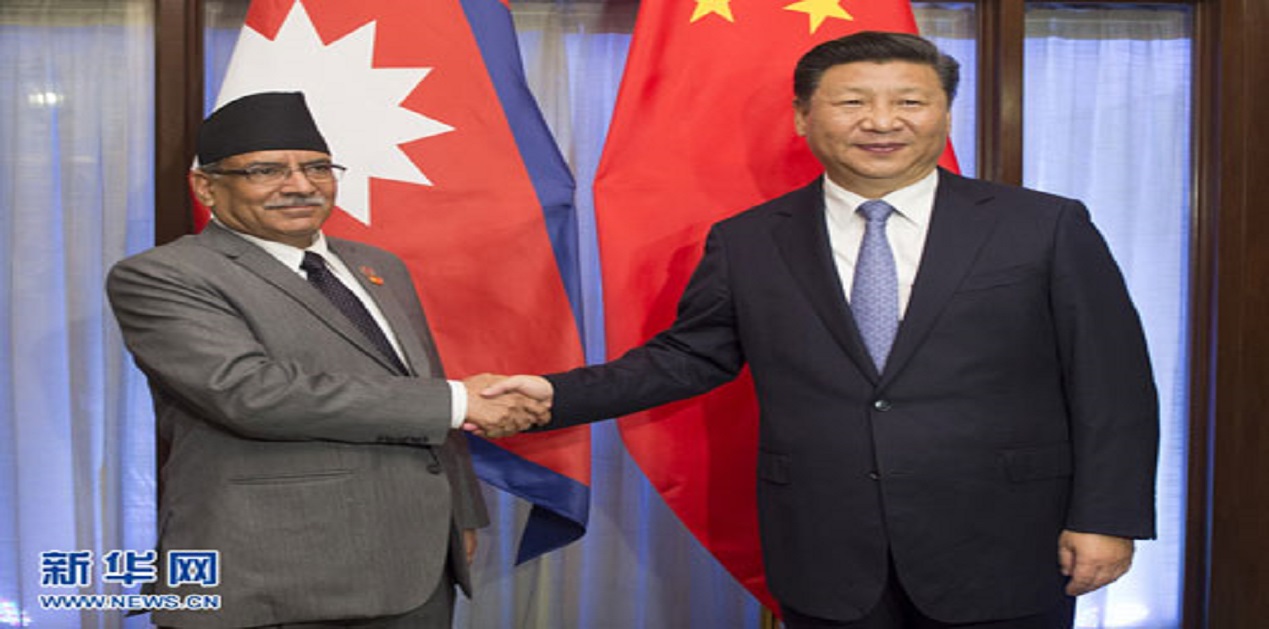The New Map Controversy
The Nepalese Prime Minister Pushpa Kamal Dahal alias Prachanda is visiting China from 22 September. The visit comes in the backdrop of Nepal’s objections to the recently released “2023 edition of the standard map of China”, released on 28 August 2023 by China’s Ministry of Natural Resources. Ministry of Foreign Affairs has noted that “Nepal unequivocally believes that this map must be respected by our neighbours as well as the international community.”
In addition to Nepal’s objections to the new standard map, the Belt and Road Initiative (BRI) will be a challenging point on the agenda. China’s ambitious multi-billion-dollar BRI has suffered heavily since it was signed in 2017. No single project has been identified on a workable front or executed. Instead, BRI has run into controversy. Thirdly, China desperately wants to revisit and revise the BRI framework with Nepal, but the government seems to have made its strategic choices. Nepal has embraced a grant of $500 million under the Millennium Challenge Corporation (MCC) from the United States.
Nepal, a Critical Geography
Nepal joined a group of countries, including India, the Philippines, Malaysia, Indonesia, Vietnam and Taiwan, in objecting to the new standard map of China. This is the second occasion in the last three years that Nepal has raised concerns about China’s territorial aggressions. In October 2020, a delegation of Nepalese lawmakers submitted a report to the government alleging land-grab by China.
Nepal shares a long border with Tibet and has been a critical security hotspot in China’s security considerations in the high Himalayas. While China puts security as the center point in bilateral ties with Nepal, Beijing’s fears of a third country’s role in destabilising Tibet through Nepal. Therefore, China has been critical of the other countries supporting Tibetan refugees in Nepal, including India and the United States.
China has always sought unconditional support from Nepal on the ‘One China’ policy to ensure that no external force uses coercive means to export instability into Tibet using Nepal as a gateway. Although Nepal has affirmed its support of the One China policy in all its official engagements with China, such incidents deeply impact the ties. During the visit, it will be crucial to see if Nepal demands something in exchange to support the One China policy, which may be the changes in the new standard map.
Anti-China Protests in Nepal
The recent public flack in Nepal against China’s new map included Balen Shah, the capital city’s mayor—Kathmandu. Balen posted, “We consider it a wrong step against our sensitivities to show Nepali territory to China…therefore, today I have decided not to go on my 5-day visit to China based on ethics.” Balen Shah led a mass movement against India in 2019 due to a border row. This episode was important in his rise as a famous face among Nepalese youth. It is rare to see public ire against China in Nepal, but it seems to be growing now, and it is not a healthy sign for Chinese strategic calculations in Nepal.
China is already facing public ire in Nepal following random border blockades. As a result, Nepalese traders have suffered huge losses since their shipments got stuck at the China-Nepal border for months. It comes as a shock to common Nepalese against an ambitious promise by China to allow Nepal to trade with third countries using Chinese ports.
China’s belief that it became immune to such activities after the mainstream Communist parties in Nepal called China a natural ideological partner in 2008. While Nepal’s Communists/Maoists and other left parties are shedding their hardcore ‘non-religious’ ideological outlook in a Hindu majority country to woo their constituencies, the course of good-neighbour seems to be moving south—India because Nepalese find social-cultural, linguistic and economic affinity with India stronger.
BRI bubble busted
In 2016, China signed the Transit Agreement to help Nepal reduce its reliance on India for third-country trade. No single shipment has moved in the last seven years, and the recurrence of the border blockades shows no silver line on the transit front. While transit and blockade issues will be crucial for Nepal, the fall of BRI has been a setback for China in Nepal. BRI was seen as China’s most significant diplomatic success, considering India had reportedly exhibited unhappiness over Nepal joining the initiative. A staggering 36 projects were identified in principle, including the multi-billion-dollar Trans Himalayan Multidimensional Connectivity. But that euphoria seems to be fading now.
To China’s biggest disappointment, the framework agreement on BRI still remains in the execution stage. Though China unilaterally claimed that the Pokhara International Airport in Nepal, constructed with Chinese assistance, was part of the BRI, it did not go well with Nepal, and Kathmandu refuted such claims. Nepal has asked China to clarify the financial model under the BRI and conveyed that it would prefer grants instead of loans from China. During this visit, Prime Minister Prachanda is expected to ask China to convert the USD 215.96 million soft loan issued by China’s EXIM Bank in March 2016 into a grant. The conversion of the Chinese loan to a grant seems unlikely since the current administration hasn’t been on good terms with Beijing.
India, still a Dominant Power
Prime Minister Prachanda went to India on his first state visit since assuming office in December 2023. During his first tenure in 2008, Prachanda went to China by breaking away from the traditional norm of visiting India by the newly elected Prime Minister. It had undoubtedly raised eyebrows in India. However, Prachanda has come a long way in understanding the importance of diplomatic engagement with India as the most crucial neighbour for a landlocked Nepal. The India-Nepal bonhomie was visible during his recent visit to India. He has exhibited his fine-tuning with New Delhi, especially since Nepal began to export electricity to India last year and improved trade ties. Undoubtedly, China used certain sections of the Nepalese political elite to project India in a bad light. Still, Beijing has failed to an extent by underestimating the deeply rooted socio-cultural and economic ties that bind India and Nepal.
Crucial Entry of the U.S.
China faces the challenge of a third country—the United States. The rise of the United States as an aid and development partner, especially since Nepal agreed to receive a USD 500 million grant from the U.S. under the MCC in 2022 against China’s opposition, has changed the trajectory of Nepal-U.S. ties. Also, the long-standing American support of Tibetan refugees in Nepal and globally worries China. At the same time, India is also gaging at the development partnership between the United States and Nepal through a bright prism. As the two democracies, India and the United States, extend development cooperation to a new but emerging democracy—Nepal, China must shed its expansionist outlook.
Conclusion
Prime Minister Prachanda’s upcoming visit to China has significant implications for Nepal-China relations. While Nepal is striking a balance with immediate and far-away development partners, China would not want to see Nepal welcoming India and the United States with open arms, considering their policies on Tibet. Nepal’s pushback against China’s territorial claims and its embrace of support from the United States indicate a shift in its strategic choices.
With Prime Minister Prachanda holding some stability in the government and seeming to be doing well on the foreign policy front, his visit’s outcome will shape the future of Nepal-China relations. The visit will provide insights into whether Nepal’s growing alignment with India and the United States will continue to challenge China’s influence in the Himalayan nation or if there is room for reconciliation and cooperation between these neighbouring nations.
(The paper is the author’s individual scholastic articulation. The author certifies that the article/paper is original in content, unpublished and it has not been submitted for publication/web upload elsewhere, and that the facts and figures quoted are duly referenced, as needed, and are believed to be correct). (The paper does not necessarily represent the organisational stance... More >>
Image Source: https://www.fmprc.gov.cn/mfa_eng/topics_665678/2016zt/XJPDJPZMJLGJXGSFWBCXZYDGAJXDJZGJLDRDBCHW/201610/W020210525482411628613.jpg











Post new comment